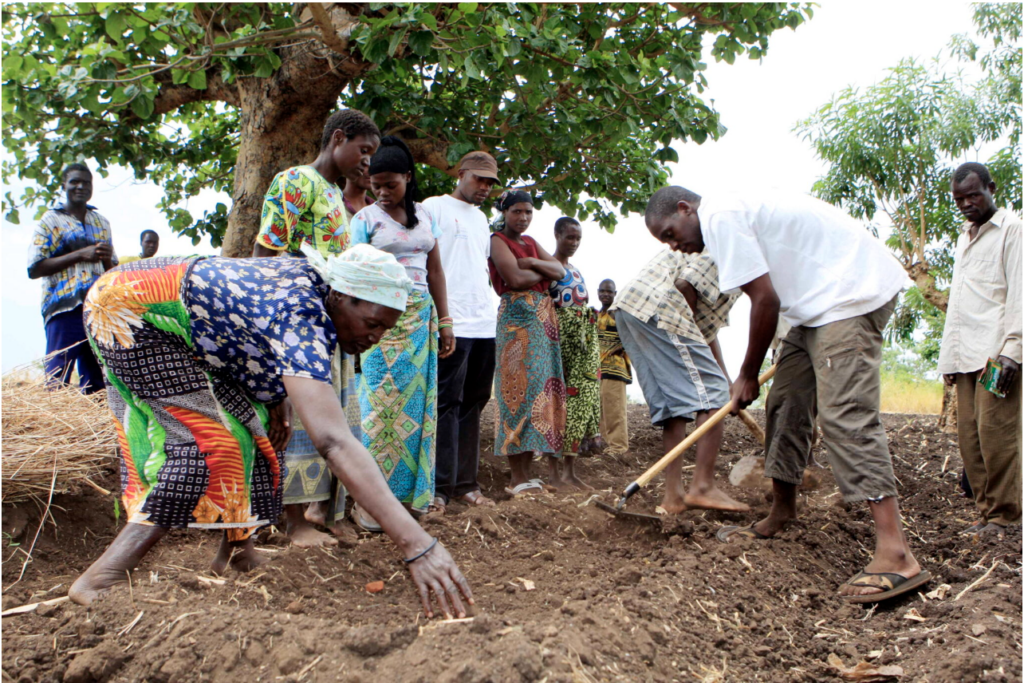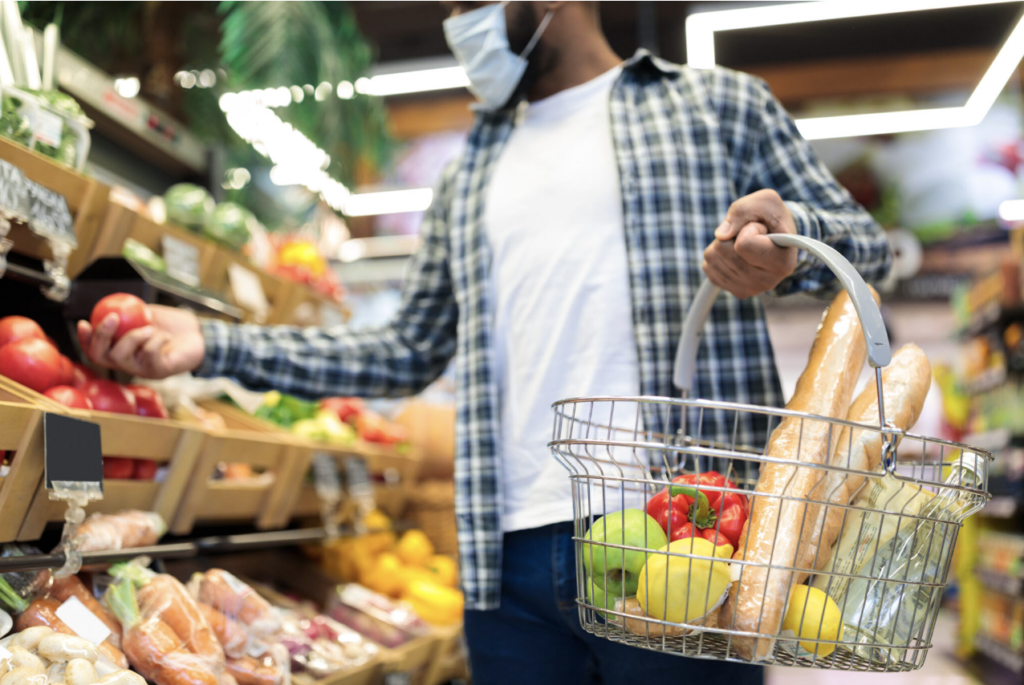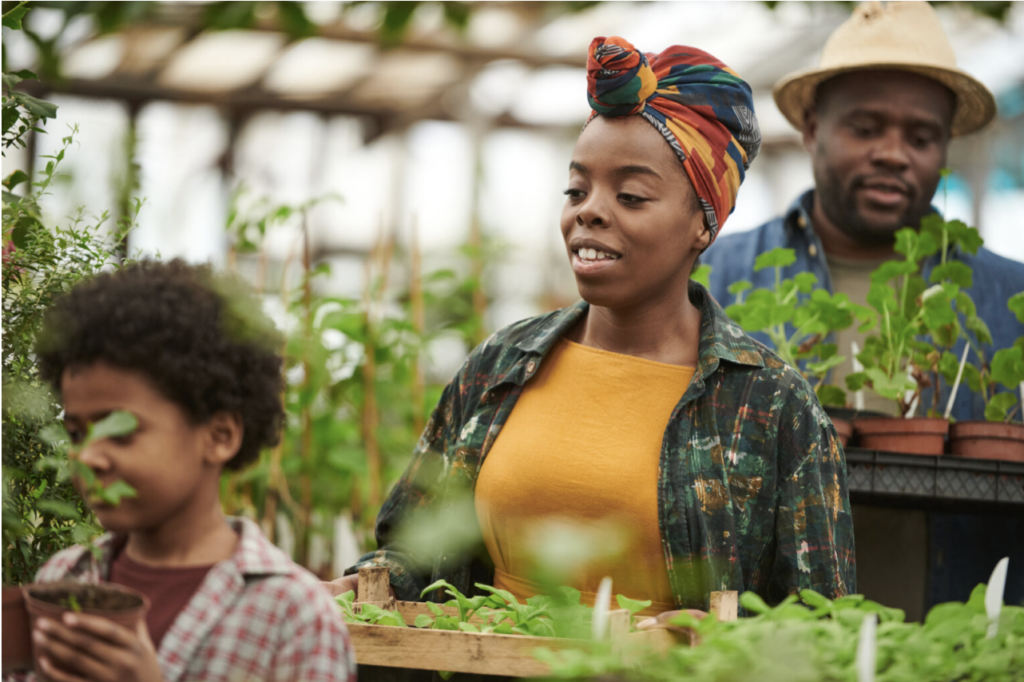- More than a quarter of women across the world are food insecure. In other words, they don’t have enough healthy food to eat every day.
- As the planet gets hotter and rainfall patterns change, it becomes harder to grow food — and women will be hit harder still.
- In the face of climate change, we need meaningful solutions to make sure women no longer go hungry. Will political parties in the upcoming elections show they care by addressing climate change and hunger in their manifestos?
In today’s newsletter, Nicole Ludolph unpacks what happens when women don’t have enough to eat. Sign up.

Imagine if everyone in South Africa had enough to eat. Except one in five people in the country don’t.
That translates to roughly 3.7-million homes in South Africa that did not have enough healthy food every day or know when — or if — they’ll have food the next day. Experts call this being food insecure. As a result, people either eat less than they should or eat food that’s cheap but doesn’t necessarily give them all the nutrients to keep their bodies strong and healthy.
That’s why the DG Murray Trust’s CEO, David Harrison, argued that “adequate nutrition must be a priority on the agenda for every political party,” in a February op-ed for Bhekisisa.
So too must be climate change — because climate change makes it more difficult to grow food.
Here’s why political parties who care about the country’s women and children — and general health — should address both food insecurity and climate health in their manifestos.
How the weather influences how much food we have
A 2021 modelling study shows that because of warmer conditions and erratic rainfall linked to human activities, the world’s yields from farming have dropped by 20% over the last 60 years. This, the authors say, is the same as if the amount of food produced by farmers is stuck at the level it was in 2013.
Only the planet’s population grew by almost 600-million people between 2013 and 2020, meaning there are more mouths to feed but less food available for everyone.
In South Africa, almost 14.5-million people of the country’s 61-million residents — almost a quarter of the population — were faced with having too little healthy food in 2022.
But it’s more complex than a simple supply issue.
Of the families that were food insecure, one in six were headed by women.
In a household, it’s usually women who are in charge of what and how much their family eats — and in poor, rural communities they’re often responsible for growing food too. So when climate change makes it harder to grow food yourself or drives up prices of products because farmers can’t supply enough, it means women struggle to put food on the table.
“Hungry people are voters too”, Harrison writes.
And if changing weather patterns mean that people’s chances of becoming hungry are on the rise, having a clear plan not only for dealing with the aftermath of extreme weather events but also for preparing to face a new climate reality could determine in which box voters put their cross.
Why food security is a gendered issue
Across the world, women tend to get paid less for work, struggle more to find jobs (or well-paying jobs) and have to take on unpaid duties at home like child care and preparing meals. So when getting food becomes more expensive or floods or droughts destroy crops, women’s families can start going hungry.
In South Africa, against the backdrop of racial and social inequalities, the almost 25-million Black and 2.7-million coloured women (making up about 46% of the population) struggle to buffer threats to their livelihoods, such as losing their job, rising costs of living or extreme weather events that destroy their homes and crops. Research shows being socially vulnerable raises the chance that they won’t have a consistent supply of healthy food in their homes.
Just over 3-million families in South Africa grow vegetables or keep animals as a source of food, with most of them in rural areas. A fifth of these households are headed by women.
In less developed countries such as South Africa, being a female farmer is difficult, because women often don’t own land (or have only small pieces of land), struggle to buy seeds or fertiliser and don’t have access to store their produce. Because of gender inequalities, women also often don’t have access to information to help them farm better, especially when it comes to knowing how to adapt to changing weather patterns, like learning to farm in a “climate-smart” way that gets the best out of the soil, watering their crops efficiently or planting different crops in the same field (called intercropping). Moreover, these small-scale farmers also need to know about — and be able to plant — varieties that survive better during droughts or when there is unusual amounts of rain.
For instance, in South Africa’s rural areas, many smallholder farmers who grow food for their families plant maize. However, because the country tends to be drought-prone, maize crops may not survive when it doesn’t rain enough. Sorghum, a nutritious grain that is similar to maize, is hardier in drought, though.
For women growing their own food, knowing to replace maize with sorghum could be the difference between eating and going hungry.
How hunger plays out in the face of climate change
Food security is not only about enough food being produced, but also being able to get it, knowing how to prepare balanced meals and having a steady supply.
So, when climate change brings about severe weather, it often results in a drastic and almost sudden drop in food security.
For women in KwaZulu-Natal, the disastrous flooding of April 2022 did just that.
In the aftermath of the floods, researchers found that women in the province, who are already affected by gender and racial inequality, started growing food in their backyards because, even if they still had money for food, it simply wasn’t available. The floods had destroyed shops or markets and roads and transport systems that could take them there or bring food in.
Moreover, it was difficult to use the food they had. More than 12 000 homes were either completely washed away or damaged so badly that people had to rebuild. About 40 000 people had to find shelter elsewhere.
This meant people couldn’t prepare meals safely or keep food from spoiling because appliances like stoves or fridges had been washed away or electricity and water supply was interrupted.
Having a steady supply of different kinds of food to ensure a healthy diet — like meat, vegetables, oil, starches and dairy — is difficult in the wake of a climate disaster when the government’s ability to respond is already under pressure or poorly planned.
This often happens in low-income countries where governance is poor, there’s little funding to rebuild infrastructure like roads and water supply systems or no clear response plans are in place.
As a panel of experts noted during a Bhekisisa-led discussion in November about the links between climate change and health in November, national government departments are struggling to put connected measures in place to deal with or prepare for what a changing climate will bring — despite politicians’ talk.
Tackling the problem
Tackling food insecurity, especially among poor women, is a huge job, says Nicole Paganini, a researcher at the Think Tank for Sustainability, and fixing the cause will require dealing with structural issues [such as poor urban planning or gender dynamics] that the government can’t change with one programme; these need societal change”.
For example, according to the 2023 State of Food Security and Nutrition in the World report, small food businesses, which are often run by women, can help to increase the supply of healthy food in rural communities. But they’re often overlooked by policymakers and investors and so they struggle to get the financial or operational support that help them flourish.
The report also highlights how poor urban planning can reduce women’s access to healthy food. In Malawi, for example, few transport options to informal markets in rural areas, which tend to be cheaper than those in urban areas, makes it hard for poorer women-headed households to buy healthy food at affordable prices.
Poor women living in South Africa are often the target of initiatives by the government or civil society to help with growing or accessing food, like urban agriculture or food kitchens, says Paganini. Although they have their place and “can help spark conversations around food security”, these measures aren’t long-term solutions to the problem of hunger, she says.
”Governments should recognise and support the kind of innovations [like these] people build when they are driven by a crisis”.
“We need to move away from band-aid policy programmes that help for a certain period, like urban agriculture or seedlings or food donations, because in the end, those programmes don’t address the structural barriers that are part of our society”.
Although difficult, it’s possible to fix if the problem is tackled from the cause of the problem, she says.
“Climate change is a kind of a wave ahead of us. Gaining an understanding of how this will impact those who don’t have a voice will be the first step in strengthening the food system.”
The question now is: What will South Africa — and those parties who will govern the country after our 2024 elections — do about fixing hunger in the face of climate change?
Nicole Ludolph is a health journalist at Bhekisisa.








